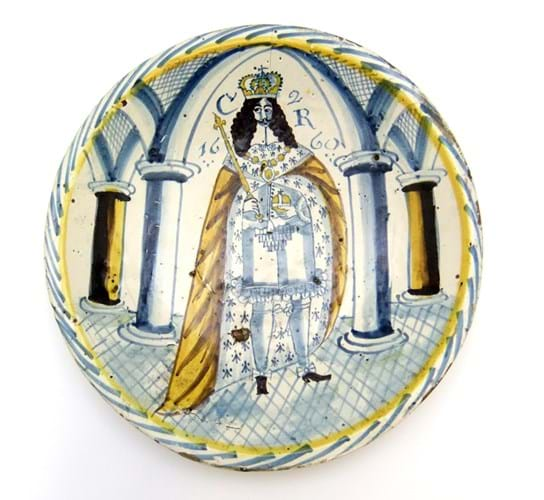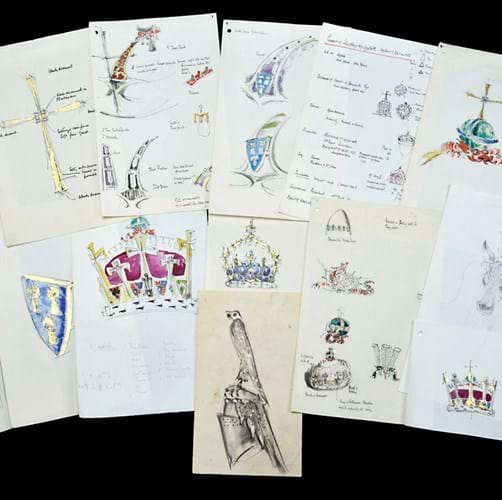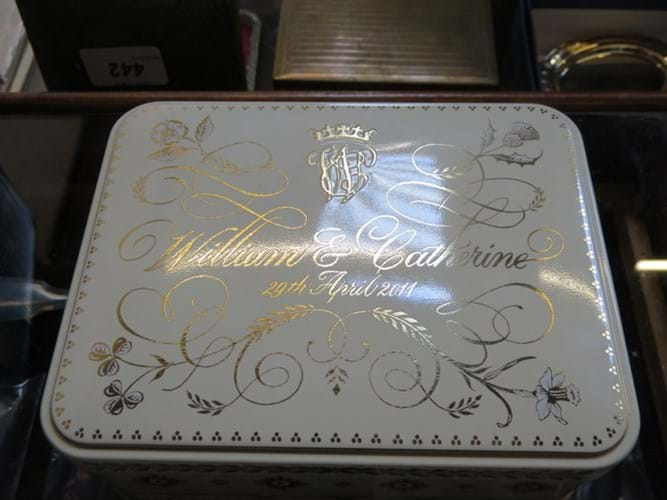
The answer is, of course, ‘no’ – unless, that is, an object is centuries old and rare and/or has a direct personal association with a royal individual. Here are five items connected to royal events and personages that prove this rule of thumb.
1. Royal portrait chargers
In the 17th and 18th centuries, to celebrate a coronation or another significant royal event, delft chargers featuring naïve portraits of royal personages were made in Bristol and London.
Such dishes only occasionally come onto the market each generation and in 2011, a previously unrecorded 17th century Delftware charger bearing a portrait of Charles II sold for £105,000 at Roseberys in West Norwood.
Part of its rarity derived from its date of 1660, the year of the Restoration. Other, later examples survive but very few from the Restoration itself.
2. Bespoke jewellery designs
Key members of the British royal family down the ages have inherited a king’s ransom in jewels but have also commissioned their own pieces as gifts or for special occasions.
The investiture of Prince Charles as Prince of Wales at Caernarvon Castle in 1969 is one such example, which featured a specially-commissioned 24ct gold coronet worn (once) by the prince.
The event was stage-managed by photographer and designer, the late Lord Snowdon, uncle of Prince Charles, as a showcase of British design.
On March 27 this year at Dix Noonan Webb, hip post-war jeweller Louis Osman’s design drawings for the coronet sold for well above the £400-600 guide. The lot, which also included the model ‘head’ on which the crown was constructed, was knocked down to an American buyer at £5500.

Louis Osman’s design drawings for the coronet used in the investiture of Prince Charles as Prince of Wales at Caernarvon Castle in 1969, which sold for £5500 at Dix Noonan Webb in 2018.
3. Personal letters
Few royal items are as personal as handwritten letters of thanks or condolence and queen of this art was the late Diana, Princess of Wales. Many of her missives, ranging from a signed Christmas card (value: approx. £500) to chatty, revealing letters sent to friends or staff, have come to market since her death in 1997 and their value continues to rise.
A group of four letters from a 14 year-old Diana to her nanny, including one describing failed attempts to set her sister up with Prince Charles, fetched more than £20,000 at Reeman Dansie in 1998.
Sold at auction in January 2017 was a particularly poignant thank-you note, dated 1992 from Diana to a Buckingham Palace steward, which describes how Prince Harry was “constantly in trouble” at boarding school. It fetched £2400 at Cheffins.
4. Signed photos
While members of the royal family do not give autographs as such, senior members are liable, across their lifetime, to sign more photos than actors and rock stars.
Autographed royal presentation photographs are the stock and trade of the royal official gift portfolio and those by Princess Diana are highly sought after, especially if they are in expensive photo frames.
In 2015 an autographed photo of Princess Diana in her distinctive ‘D’ monogrammed silver presentation frame, sold for £5000 at Reeman Dansie.
5. Wedding cake
The idea of giving boxed royal wedding cake as souvenirs came from the 17th century tradition of sending un-iced slices of ‘groom’s cake’ home with guests.
And despite their perishable nature, such royal keepsakes fetch high prices at auction – prices dependent on the particular wedding in question.
Cake from the nuptials of the Duke and Duchess of Cambridge in April 2011 has sold for a wide spectrum of prices.
Some 600 slices of the eight-tier cake were given as gifts by the royal couple and on Wednesday, May 16, an untouched slice in its resplendent commemorative tin, sold at Liverpool auction house Cato Crane for a top-estimate £300.

A slice of cake from the wedding of the Duke and Duchess of Cambridge in April 2011, contained within its commemorative tin that sold for a top-estimate £300 at Cato Crane.
Yet in 2014, another slice fetched $7500 at Beverley Hills auctioneer Julien’s.
The record price for royal wedding cake is, however, held by the Duke and Duchess of Windsor. Cake from their marriage, which took place in 1937 after the then-Wallis Simpson and newly-abdicated King Edward VIII had gone into exile in France, sold for $29,900 in 1998 by Sotheby’s in New York.





